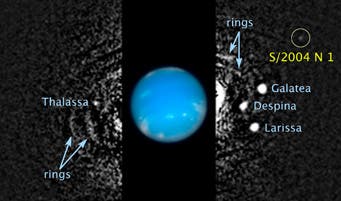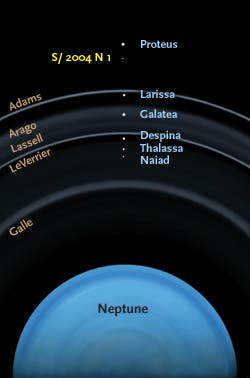An US astronomer recently reported that he and his team have discovered a new moon orbiting the eighth and farthest planet from the sun, Neptune. Designated S/2004 N 1, this is the 14th known moon to circle the giant planet.

NASA / ESA / M. Showalter (SETI Inst.)
Some of you might find it odd that we’ve yet to spot all the moons orbiting around the planet in our solar system, when almost each day we learn how astronomers find new distant worlds or other cosmic bodies thousands of light years away from us. The truth is however, this new moon, much like all the others found in the solar system in recent years, is so tiny and dim that it’s no wonder it has eluded detection. Imagine that in 1989 Voyager failed to report it either, and the probe actually traveled very close to Neptune.
Luckily Mark Showalter (SETI Institute) was very vigilant and discovered the moon after investigating a faint speck that was repeatedly showing up in Hubble Space Telescope images of Neptune taken between 2004 and 2009.
“The moons and arcs orbit very quickly, so we had to devise a way to follow their motion in order to bring out the details of the system,” Mr Showalter explained.
“It’s the same reason a sports photographer tracks a running athlete – the athlete stays in focus, but the background blurs.”
Nasa said the moon was roughly 100 million times dimmer than the faintest star visible to the naked eye, which serves to explain how it went unnoticed all this while. Combined with the fact that it measures a mere 20 kilometers in diameter and moves really fast completing one revolution in just 23 hours, this rock was really hard to spot.

Don Davis / The New Solar System






